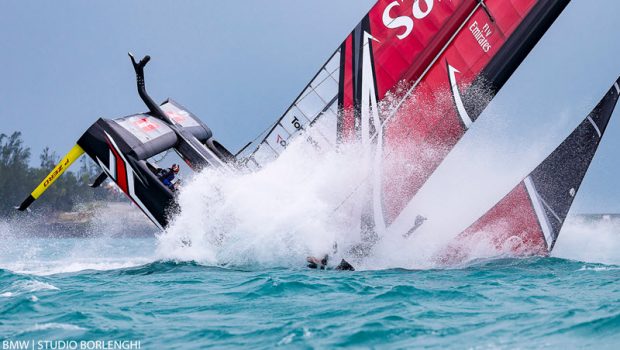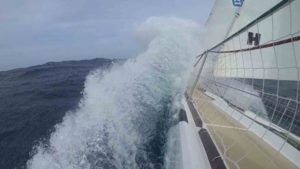America’s Cup: catamarans had too many negatives

If any team not named Team New Zealand had won the 35th America’s Cup, the event would have carried on with little change.
The venue was likely to move, but the other five competing teams in Bermuda sought to continue with the same madly-fast foiling catamaran.
Continuity does not come easy with the America’s Cup, and for teams heavily reliant on commercial support, continuity is critical to their survival. A significant proponent of continuity was Ben Ainslie, Team Principal and Skipper for the British challenger, Land Rover BAR.
“I think the foiling multihulls have proven to be great for the spectators and the sailors love them and that would be a shame to move away from that,” Ainslie said, having signed a framework agreement which would also have had the event held every two years.
But the Kiwi team did win, the event will not be held until 2021, and most significantly, the 36th America’s Cup returns to monohulls. So with the gang of five no longer tied to their collective future vision for the America’s Cup, we hear now how they really feel.
Andy Claughton, who has been Land Rover BAR’s chief technical officer, shares a less flattering opinion of the 15-meter AC Class seen in Bermuda. An excerpt below is from Claughton’s column titled ‘Cut!’ in the October 2017 edition of Seahorse Magazine.
“While they were impressive, the foiling catamarans were immensely complicated, expensive, and time consuming to maintain.
“This is okay for a racing car, where everyone knows that when you look under the bonnet of a modern car, you have no idea what is going on but you know it’s cool and clever, and reassuringly expensive.
“But for a racing yacht none of this complication seems appropriate.
“Our sport is about challenging wind, wave, and tide, and this of itself is complication enough. If you add in 30 hydraulic actuators and half a million lines of computer code, does this add it the spectacle?
“The boats were miserable to sail for two-thirds of the crew, slaving over the pumps to keep the hydraulic fluid flowing. For the helmsman and wing trimmer it was hear in the mouth stuff as the penalty for a small error was a race loss, and in winds over 20 knots, even in the Great Sound, there was a real risk of serious injury if anything went wrong.
“These boats could not be safely raced in the Hauraki Gulf, Newport, RI or the Solent, ie; just the sort of places the Deed of Gift envisaged.”
Note: Seahorse, the dominant international magazine for anyone serious about their racing, is available by magazine subscription or iPad download: www.seahorse.co.uk/shop










